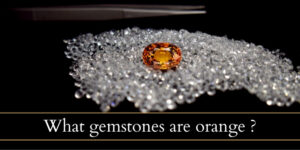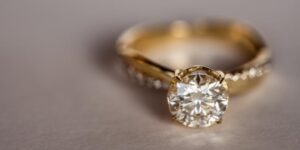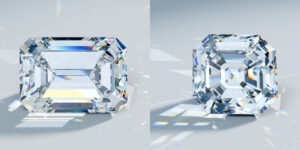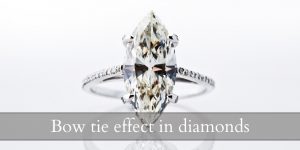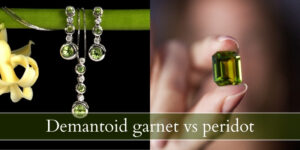Malachite and jade are two of the best known green gemstones that are not transparent, but are beautiful in their own way. So if you’re wondering which of these two gems you should get for yourself, read on to find out their main differences and a couple of similarities that put things into perspective.
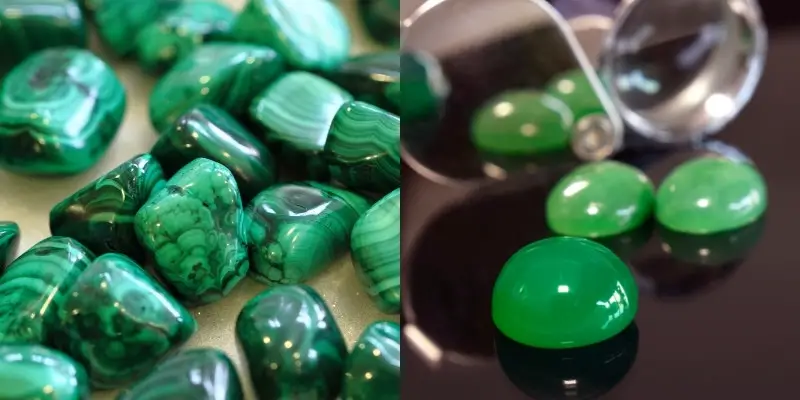
Malachite vs jade
Malachite is a much softer gem than jade, and much more affordable. Malachite will always have a banded appearance with various shades of dark and light green, while jade has smooth, uniform color. Jade comes with high prestige and can easily be carved into very detailed objects, while malachite is less popular and works best in simpler designs. Malachite is always green while jade can come in several colors, with green the most precious color.
What is malachite ?
Malachite is a copper carbonate hydroxide mineral and it owes its green color to a significant amount of oxidized copper in its chemical makeup. It tends to grow deep underground, in nooks and crannies where water would deposit trace amounts of copper, allowing the formation of deposits with no specific shape or growth habit.
Because of the way malachite grows – accumulation over time of sediments of various copper intensity – the gem has thousands of layers, or banding much like agate but more finer and more frequent. Malachite appears heavily banded with various shades of green, from light to dark and mossy. This is part of malachite’s appeal, as it resembles the many veins of a marble in a way.
What is jade ?
Jade is the name used for two separate minerals that look similar but are quite different. Jadeite and nephrite are the minerals, and jadeite is the one finer one. Both minerals have been used as jade and considered the same thing until the the mid 1800s.
Jadeite is a pyroxene with large amounts of sodium and aluminium. This jade has a very fine granulation and comes in many colors but the most sought-after is the deep, bright green one.
Nephrite is actually a tremolite-ferroactinolite in a fibrous matrix, and it needs high amounts of iron to get a green color. This type of jade is softer, less valuable, and is not as translucent as jadeite. We will discuss both jadeite and nephrite in this post, when comparing to malachite.
Read also: Malachite VS Emerald
1. Jade is tougher than malachite
Jade and malachite are two (or rather three) different minerals and as such they have varying degrees of hardness. How hard a gem or mineral is dictates how it can be used in jewelry or decoration.
Malachite scores an average of 3.5 on the Mohs hardness scale, just above pearl. This means it will easily scratch or shatter, so it needs a very protective setting (such as a bezel). Or, better yet, it’s best to use malachite only in necklaces, earrings, or pins. This way you won’t have your malachite set in a way it can be scratched or hurt.
Jadeite scores a 7 on the Mohs scale white nephrite a 6 on the same, so we will average jade’s Mohs score at 6.5 and this is much tougher than malachite. It might still be a good idea to wear your jade in earrings and pendants though, but beware of jade items that are long and thin, such as pure jade hoop earrings, pure jade long pendants and the like. Those may break when you least want them to.
2. Malachite comes in larger specimens than jade
Malachite is quite common and wherever it was mine, very large deposits were found. Some were several metric tons, some were hundreds of kilograms per specimen. There are large, massive malachite items carved from a single piece of malachite.
For example the Malachite room in the Winter Palace in St. Petersburg in Russia features tall malachite pillars, a malachite fireplace mask, and several other decorations. Another large item is the malachite vase with gold detailing in the Hermitage skylight room on the Winter Palace.
Jade does come in large pieces too, but never as large as malachite. Jade ornaments were generally small but very detailed. So if you’re looking for either jade or malachite for a large decoration project, malachite is the one to go for. If you’re simply looking for a green gem for a necklace with massive stones, both jade and malachite will work just fine.
3. Jade comes in several colors, malachite is only green
Malachite comes in a beautiful green color with cool blue undertones, and the various bands are simply darker or lighter, but their hue doe not alternate, they do not turn a bit yellow or a bit more blue. So a malachite’s color may alternate in light/dark, but the overall color tone and hue is the same.
Jade comes in a few colors, depending on what you’re getting (nephrite or jadeite). You can find jade from pale yellow (nearly white) to yellow-green, light green, apple green, deep green, grey-black, blue-green, and some rare colors such as lavender or pink. Opaqueness and transparency can very within the same specimen, with jadeite showing the most transparency.
4. Malachite has a banded appearance while jade has a uniform color
The appearance of the green color can make or break a jewelry piece or decoration, so malachite’s banded appearance may work better with some pieces than others. Jade tends to be uniform in color and not have as much texture as malachite, so it will definitely go with any style you choose.
If you’re having trouble telling malachite from jade, especially if it’s a very similar color, you ca always rely on the banding pattern on malachite. In some pieces it might be less noticeable, but if you look close enough you should see various light and dark ones.
5. Jade has a natural luster to it, malachite needs a coating
Jade tends to be incredibly shiny and have a great luster to it even when it’s raw. Once it’s cut and then polished it’s almost like glass in terms of luster and smoothness.
Malachite has no luster in its raw form, and even when cut and polished it may not be as smooth as jade. Many malachite pieces need serious polishing to become shiny, and some of them may need a resin coating both for protection and for shine.
So if in doubt, know that jade is always the shinier of the two, and might allow some light to enter through the sides or some very thin parts. malachite is completely opaque and needs very fine polishing to become shiny.
6. Malachite is less popular than jade
Malachite and jade are both quite easy to find in mines, but malachite is much more abundant and comes in larger amounts per mine. So, it is considered less precious and because of that less popular. This means that when you’re looking for raw or cut malachite for your jewelry or decoration needs, it won’t be as easy as finding jade.
Jade is much more popular and you have a higher chance of finding it at retailers and jewelers alike. Malachite not so much.
And if you’d like to wear a gemstone with more prestige and popularity, then jade is the gem you’re looking for as it will always impress people.
7. Jade is much more expensive than malachite
Jade has always been treated as a very precious gemstone, despite not having a diamond’s luster sparkle. But its translucent green has fascinated many or thousands of years, and because of this it was sometimes regarded as more precious than silver and gold.
Jade is very difficult to price, as it takes into account color, jade type, translucency and any carvings it may have. So you can easily find jade for as little as $10 or even thousands of dollars, depending on exactly what you’re buying. Sometimes the same piece of jade can get different price tags, depending on who is looking at it.
In general though, as far as jade jewelry is concerned, it doesn’t go for much ore than $2,000 per piece, depending on craftsmanship, carving, and how heavy it is. It’s jade decorations that bring up the price, as they tend to be the most intricate pieces.
Meanwhile malachite sells if about $1 per gram, and it gets more expensive only if it’s a decoration such as carved object, a vase, a lucky charm, or something to cover a wall. Malachite decorations are very heavy and are not as fine or intricate as jade decorations, but they are still priced mostly by the artisan’s skill.
Read also: What Gemstones Are Green ?
Similarities between jade and malachite
Despite the many differences between jade and malachite, they do share some similarities. Maybe these will help you make up your mind easier. Or perhaps they will show you that for your particular project it does not necessarily matter which one you’re using, as long as you get the desired effect.
1. Both jade and malachite were used for decoration
If decoration is what you’re after, both jade and malachite can work. But they work a bit differently. Jade has no real texture and it is much tougher, so it can be carved into intricate objects much better than a malachite piece would. Think jade dragon with many scales, a forked tongue, and a snaking body. All those details show up beautifully in jade.
In malachite, due to its soft nature and very busy pattern and texture, you won’t see very intricate designs. Instead more simplistic styles that rely on malachite’s texture are common, such as a large slab of malachite used as table top to evoke a floral or marble pattern.
2. Both malachite and jade offer striking green colors
The green of malachite is quite similar to the green if jade, especially in very fine jadeite specimens. So both will work great if you’re simply looking for something green to add to your collection, or just a green element for decor. It depends on what sort of green you’re looking for, if you have a preference at all.
3. Both jade and malachite were popular in ancient cultures
Looking for something with some history to it ? Both jade and malachite have some history, and both were known in ancient times.
Jade was better known for decoration and was used extensively in Asian and Polinesian culture for honorary weapons, decorations, or as pieces that would distinguish someone of high status.
Malachite was used extensively by ancient Egyptians and the two oldest mines are in Egypt and Britain (both about 4,000 years old). Malachite was also used extensively to extract copper.

I’m the main author for jewelrymaterialguide.com. I started this site after we did tons of research before our wedding and noticed that there is information about rings, jewelry, and so on that is really hard to find on the internet.


